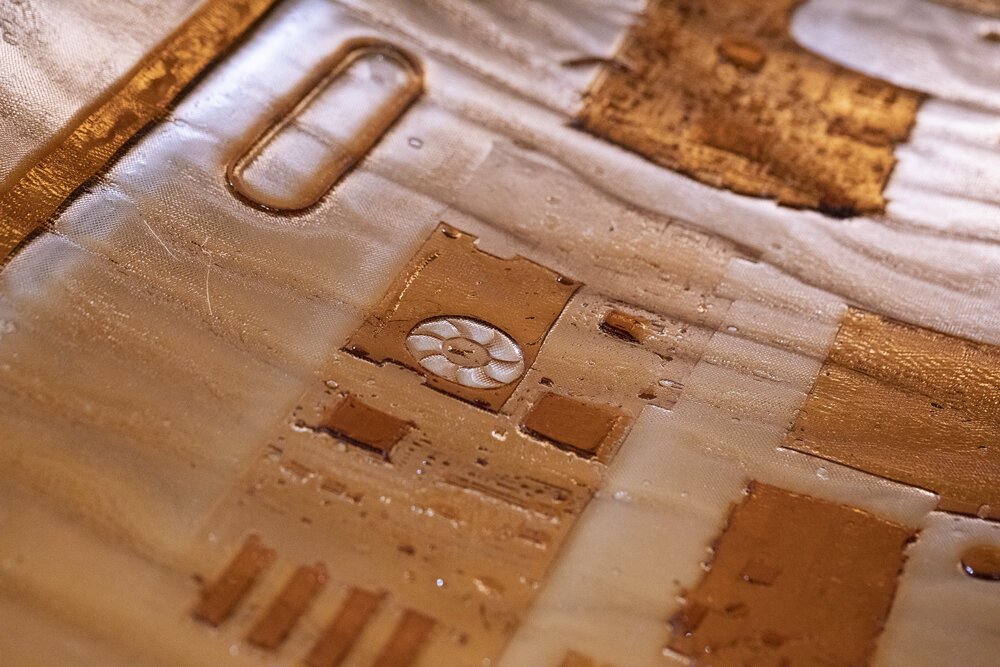
A membrane is a metabolic surface at the interface of materials, liquids and/or gases. Through their ability to transform and enable or foreclose exchanges across systems, these surfaces render visible the permeable borders between the living and its environment. Inspired by soft robotics and responsive architecture, the project envisions membranes as a set of objects and methods to interface materials, technologies, audiences, and research in art and science. It explores how the operative and adaptive processes of these surfaces—such as filtration, circulation, protection, and ‘elasticization’—can inform more sustainable relations between materiality, technology, humans, and the ecological milieux.

Fossilation, directed by Alice Jarry and co-directed by Samuel Bianchini and Marie-Pier Boucher, is part of this research-creation project about the operative concept of ‘membranes.’ The project is co-developed with l’École nationale supérieure des arts décoratifs (Ensad, Paris, with the EnsadLab laboratory) and the University of Toronto Mississauga. The installation configures an ecosystem where the image, which has become a material imprint, composes with different dimensions specific to its environment.
Similar to a film roll, a large bioplastic membrane is made up of several successive photograms. Rather than being the effect of a certain photographic framing, these quasi-images come from a slow form-taking process: the imprint of obsolete electronic display devices (flat screen, cables, computers and their peripherals).
Subtle light patterns animate the photograms and fluctuate according to the interference of residual energies captured on the building’s surfaces and heating/cooling pipes. The installation, in direct contact with the Pompidou’s infrastructure, configures an ecosystem where the image, which has become a material imprint, is composed with different dimensions specific to its environment.
Fossilation was produced collectively on both sides of the Atlantic by Brice Ammar-Khodja, Alexandra Bachmayer, Samuel Bianchini, Marie-Pier Boucher, Didier Bouchon, Maria Chekhanovich, Matthew Halpenny, Alice Jarry, Raphaëlle Kerbrat, Annie Leuridan, Vanessa Mardirossian, Asa Perlman, Philippe Vandal, and Lucile Vareilles. It was created with the collaboration of Louise Rustan (light design) and Théo Chauvirey, Corentin Loubet, Joséphine Mas, and Simon Paugoy (technical support).
The Membranes in Action project is supported by the Social Sciences and Humanities Research Council of Canada (SSHRC); the Chaire Arts & Sciences of École Polytechnique, the École des Arts Décoratifs PSL, and the Daniel and Nina Carasso Foundation; Hexagram an International Network Dedicated to Research-Creation in Media Arts, Design, Technology, and Digital Culture; and the Milieux Institute for Arts, Culture, and Technology.









